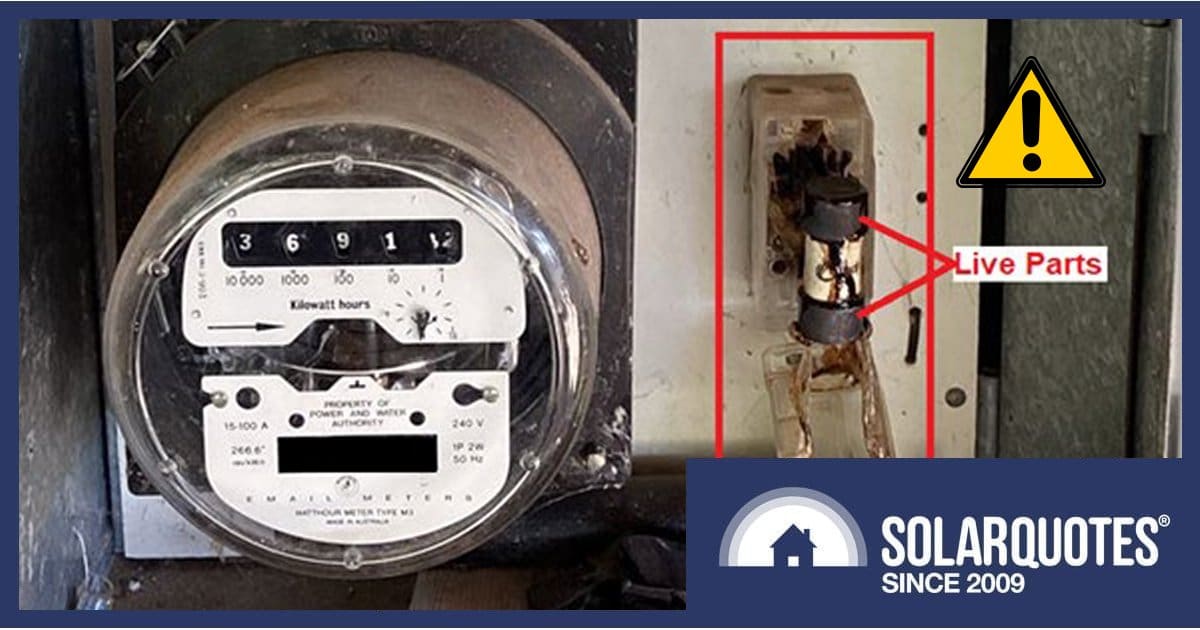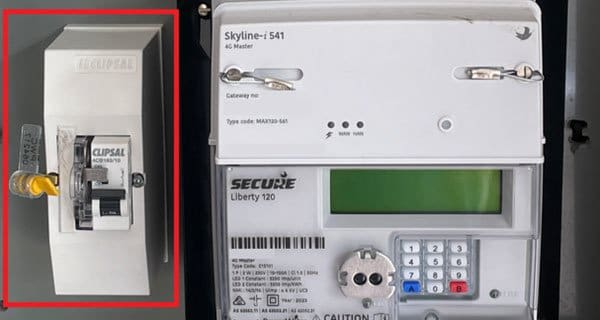If your electricity meter box looks like this, it’s time to do something about it says Northern Territory’s WorkSafe.
NT WorkSafe is warning households and electrical workers of the risk of electric shock from damaged service fuse holders used in meter boxes found in homes built before 2014. Power and Water have reported its service personnel are finding a number of heat damaged service fuse holders in meter boxes across the Territory.
While the electricity meter on the left in the image above is Power and Water’s responsibility, other items within the meter box such as switches, fuses and circuit breakers are the property and responsibility of the homeowner. It’s the homeowner’s obligation to keep the bits ‘n bobs in compliance with Power and Water’s meter manual and relevant Australian Standards.
“If the service fuse carrier and base are damaged, have an electrical contractor replace the fuse in entirety with a lockable circuit breaker.”
.. which looks like so:
The tyranny of distance means NT folks are very resourceful, but home electrical wiring work is not a DIY job. Given rules and regulations – and the risk of injury or death – this is a job for qualified electricians only.
From Spinning Discs To Solar-Ready Smart Meters
The old spinning disc meter in the image at the top of this page is looking a little long in the tooth too. That’s Power and Water’s domain – and these old meters are fast becoming a thing of the past in the NT.
Last year, Power and Water announced a rollout of smart meters (aka interval meters – such as the one in the second image) across the Territory. Starting with Darwin, Katherine, Tennant Creek, Alice Springs and then moving on to other locations, Power and Water set a goal of completing rollout by 2034. It seems they’ve been going gangbusters on this, with the halfway mark reached early this year and a revised completion date of 2030 according to some reports.
The electronic interval meters record usage each 15-minute period, along with power generation information if the house has solar panels. These details are saved by the meter, which Power and Water connects to remotely, downloads the data and provides it to the household’s electricity retailer for billing purposes.
The new smart meters will make a home ready for solar power – and there are some great solar installers servicing Darwin and elsewhere in the NT to help out there. But beyond that, a smart meter provides other benefits such as no longer requiring meters to be manually read, enabling introduction of time-of-use electricity plans, and allowing electricity customers to get a more accurate idea of how and when they use electricity.
Prising Spinning Discs From Cold, Dead Hands
As in other states, not everyone in the Northern Territory is happy about being switched over to a smart meter. This is due in part to reports from other jurisdictions about some electricity retailers behaving badly after a smart meter is installed.
Questionable activities include switching customers to a different plan without informing them, which sometimes results in higher electricity bills. The Australian Electricity Market Commission (AEMC) is aware of the hijinks and has committed to investigating.
But there’s another reason some Territorians are keen to hang on to their old spinning disc meters, and why Power and Water is eager to have them changed over sooner rather than later. As disc meters age, cumulative wear and tear can slow them down. A slow meter can result in lower electricity bills as the meter may underestimate electricity consumption – and some NT households are discovering this after switchover.



 RSS - Posts
RSS - Posts



Not only lower electricity bills, an electrician friend of mine in suburban Perth told me his meter is spinning backwards after he installed solar! The FIT was definitely higher then, but if we use present Perth FITs, instead of getting paid 2.0c/kWh FIT, he gets paid 28c/kWh!